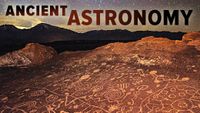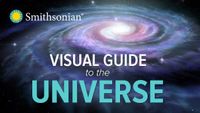The Great Courses: Difference between revisions
No edit summary |
No edit summary |
||
| Line 2: | Line 2: | ||
== The Remarkable Science of Ancient Astronomy [[Image:4-stars.png|100px]] == | == The Remarkable Science of Ancient Astronomy [[Image:4-stars.png|100px]] == | ||
[[Image:ancient astronomy.jpg|left]]'''by Professor Bradley E. Schaefer, Ph.D. - Louisiana State University'''<br/> | [[Image:ancient astronomy.jpg|left|200px]]'''by Professor Bradley E. Schaefer, Ph.D. - Louisiana State University'''<br/> | ||
The official course description is below. This is a [https://www.thegreatcourses.com/courses/the-remarkable-science-of-ancient-astronomy.html 24 episode] TV show style course with a good presenter and good visuals, although I think they move the cameras around too much to try to keep the topic "dynamic". It starts from prehistory, works through StoneHenge and the Greeks, and provides a good historical introduction to astronomy generally, ending at Copernicus and Kepler - as astronomy becomes an established science. [https://cincinnatilibrary.kanopy.com/video/remarkable-science-ancient-astronomy Kanopy link] to watch, or go to my [[Ancient Astronomy|Episode-by-Episode page]]. | The official course description is below. This is a [https://www.thegreatcourses.com/courses/the-remarkable-science-of-ancient-astronomy.html 24 episode] TV show style course with a good presenter and good visuals, although I think they move the cameras around too much to try to keep the topic "dynamic". It starts from prehistory, works through StoneHenge and the Greeks, and provides a good historical introduction to astronomy generally, ending at Copernicus and Kepler - as astronomy becomes an established science. [https://cincinnatilibrary.kanopy.com/video/remarkable-science-ancient-astronomy Kanopy link] to watch, or go to my [[Ancient Astronomy|Episode-by-Episode page]]. | ||
| Line 9: | Line 9: | ||
== A Visual Guide to the Universe with the Smithsonian [[Image:4-stars.png|100px]] == | == A Visual Guide to the Universe with the Smithsonian [[Image:4-stars.png|100px]] == | ||
[[Image:Visual Universe.jpg|left]]'''by Professor David M. Meyer, Ph.D. - Northwestern University'''<br/> | [[Image:Visual Universe.jpg|left|200px]]'''by Professor David M. Meyer, Ph.D. - Northwestern University'''<br/> | ||
The official course description is below. This is a [https://www.thegreatcourses.com/courses/a-visual-guide-to-the-universe.html 18 episode] TV show style course with a good presenter and good visuals, although I think they move the cameras around too much to try to keep the topic "dynamic". It starts from prehistory, works through StoneHenge and the Greeks, and provides a good historical introduction to astronomy generally, ending at Copernicus and Kepler - as astronomy becomes an established science. [https://cincinnatilibrary.kanopy.com/video/remarkable-science-ancient-astronomy Kanopy link] to watch, or go to my [[Ancient Astronomy|Episode-by-Episode page]]. | The official course description is below. This is a [https://www.thegreatcourses.com/courses/a-visual-guide-to-the-universe.html 18 episode] TV show style course with a good presenter and good visuals, although I think they move the cameras around too much to try to keep the topic "dynamic". It starts from prehistory, works through StoneHenge and the Greeks, and provides a good historical introduction to astronomy generally, ending at Copernicus and Kepler - as astronomy becomes an established science. [https://cincinnatilibrary.kanopy.com/video/remarkable-science-ancient-astronomy Kanopy link] to watch, or go to my [[Ancient Astronomy|Episode-by-Episode page]]. | ||
<blockquote>''For the first time in human history, we can see the full splendor and mystery of the universe, thanks to instruments on scores of planetary probes and observatories that have been launched into space since the 1990s.''</blockquote> | <blockquote>''For the first time in human history, we can see the full splendor and mystery of the universe, thanks to instruments on scores of planetary probes and observatories that have been launched into space since the 1990s.''</blockquote> | ||
Revision as of 12:02, 20 March 2019
As I mentioned on the main page The Great Courses offers several classes, hosted online at their site and at Kanopy, and the Cincinnati Public Library also carries many of their classes on DVD. Here are my detailed thoughts.
The Remarkable Science of Ancient Astronomy 
by Professor Bradley E. Schaefer, Ph.D. - Louisiana State University
The official course description is below. This is a 24 episode TV show style course with a good presenter and good visuals, although I think they move the cameras around too much to try to keep the topic "dynamic". It starts from prehistory, works through StoneHenge and the Greeks, and provides a good historical introduction to astronomy generally, ending at Copernicus and Kepler - as astronomy becomes an established science. Kanopy link to watch, or go to my Episode-by-Episode page.
In a world without artificial lights, the night sky was ablaze with over a thousand stars, whose patterns illustrated stories people had heard since childhood. Thus, ancient people viewed the sky differently than we do. Skywatching was crucial to daily life, since the motions of the heavens served as timekeeper, calendar, compass, and almanac for planning when to plant and harvest. The perfect regularity of celestial cycles was the only guaranteed aspect of life and inspired a wide range of religious and philosophical views, as different cultures struggled to grasp the unseen forces that govern the cosmos.
A Visual Guide to the Universe with the Smithsonian 
by Professor David M. Meyer, Ph.D. - Northwestern University
The official course description is below. This is a 18 episode TV show style course with a good presenter and good visuals, although I think they move the cameras around too much to try to keep the topic "dynamic". It starts from prehistory, works through StoneHenge and the Greeks, and provides a good historical introduction to astronomy generally, ending at Copernicus and Kepler - as astronomy becomes an established science. Kanopy link to watch, or go to my Episode-by-Episode page.
For the first time in human history, we can see the full splendor and mystery of the universe, thanks to instruments on scores of planetary probes and observatories that have been launched into space since the 1990s.

